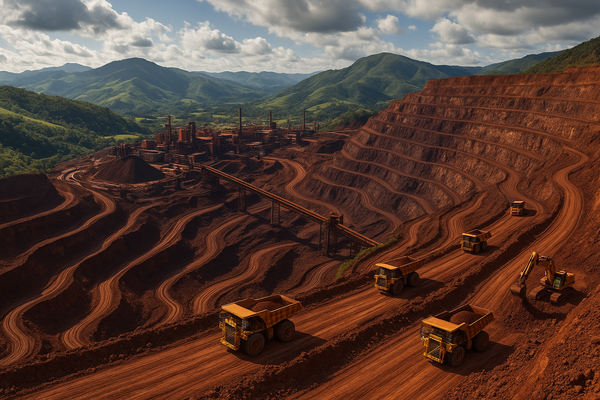History of Cleveland-Cliffs Inc.: From Iron Ore Mining to Steel Industry Leader


Cleveland-Cliffs Inc. (NYSE:CLF) stands as one of America’s most enduring industrial giants, tracing its lineage back to the boom days of the mid-19th century and evolving through waves of economic change, technological innovation, and strategic reinvention. Once rooted in the iron ore mines of Michigan and Minnesota, the company today is recognized as the largest flat-rolled steel producer in North America—a transformation that underscores both its resilience and its pivotal role in U.S. manufacturing.
Humble Beginnings in Iron Ore
Founded in 1847 as Cleveland Iron Mining Company, Cleveland-Cliffs’ origins are entwined with the discovery of vast iron ore deposits in Michigan’s Upper Peninsula. The company’s early success was built upon these rich reserves, which fed the burgeoning steel mills of the Great Lakes region and fueled American industrialization. Throughout the late 1800s and early 1900s, Cleveland-Cliffs grew by consolidating mining operations, investing in advanced extraction techniques, and establishing transport links via rail and lake freighters.
Surviving Booms, Busts, and World Wars
The 20th century brought tremendous challenges and opportunities. During both World Wars, Cleveland-Cliffs played a critical role in supplying iron ore for the nation’s armament production. The Great Depression and later the post-war economic expansion shaped the company’s fortunes, compelling leadership to balance operational efficiency with strategic investment in new resources and technology.
In the 1950s and 1960s, Cleveland-Cliffs navigated the cyclical nature of commodity markets by diversifying its portfolio and pioneering improvements in taconite pelletizing, which allowed lower-grade iron ore to be economically processed and shipped to steel mills. This technical innovation was crucial as high-grade ore reserves dwindled, securing the company’s relevance in the industry.
Strategic Shifts and Steelmaking Ambitions
By the turn of the 21st century, Cleveland-Cliffs found itself at a crossroads. Globalization was reshaping steel production, and international competitors, especially from China, were changing the landscape of the industry. Recognizing the need to move beyond being a raw material supplier, Cleveland-Cliffs began a series of transformative acquisitions.
The company’s most consequential move came in 2020, when it acquired the U.S. assets of ArcelorMittal (NYSE:MT), a global steel powerhouse, following its earlier purchase of AK Steel Holding Corporation. These deals marked Cleveland-Cliffs’ evolution from a mining-centric enterprise to a vertically integrated steel producer. With these acquisitions, the company gained significant steelmaking capacity, advanced manufacturing assets, and a direct relationship with automotive and appliance manufacturers.
Becoming the North American Steel Leader
Today, Cleveland-Cliffs commands an extensive portfolio of iron ore mines, steel mills, and value-added facilities stretching across the Midwest and beyond. Its operations supply critical steel for cars, construction, energy, and infrastructure projects. By controlling both iron ore mining and steel manufacturing, Cleveland-Cliffs has established itself as a reliable, low-cost supplier with the agility to weather market swings.
The company is also at the forefront of sustainable steelmaking. Cleveland-Cliffs has invested in electric arc furnaces, direct reduction technologies, and expanded recycling efforts to lower carbon emissions and reduce environmental impact. As the global economy shifts toward decarbonization, these steps position Cleveland-Cliffs for leadership in the next era of manufacturing.
Legacy and Looking Ahead
Cleveland-Cliffs’ journey from the iron ranges of Michigan to the heart of the U.S. steel industry is a testament to its ability to adapt, innovate, and lead. Through wars, recessions, and technological revolutions, the company has stayed true to its roots while embracing change. As the steel sector continues to evolve—driven by shifts in demand, sustainability imperatives, and competitive pressures—Cleveland-Cliffs remains a cornerstone of American industrial strength.
Disclaimer:
This article is for informational purposes only and does not constitute investment advice. Please conduct your own research or consult a financial advisor before making investment decisions.



